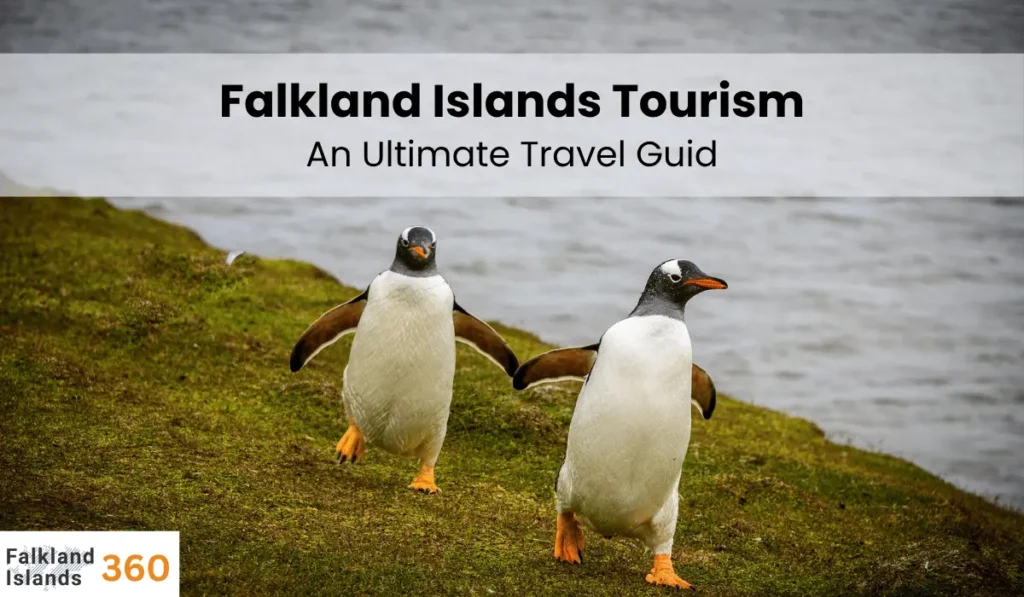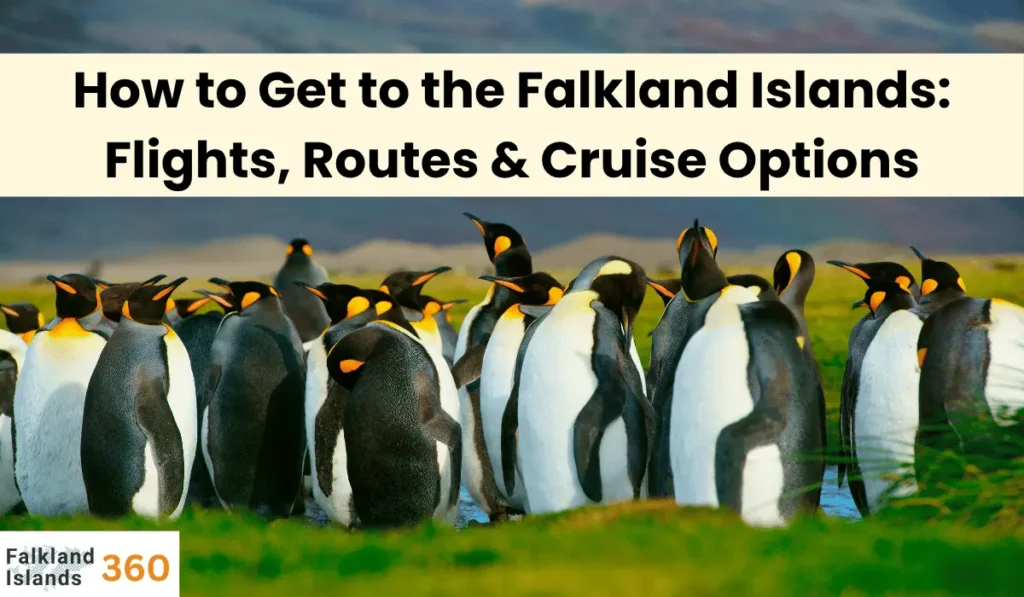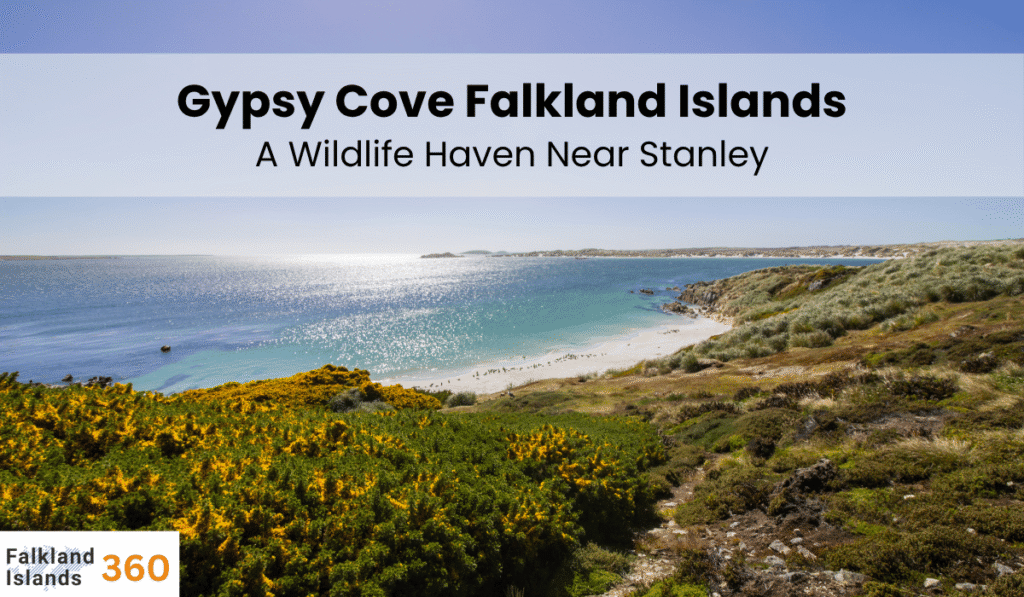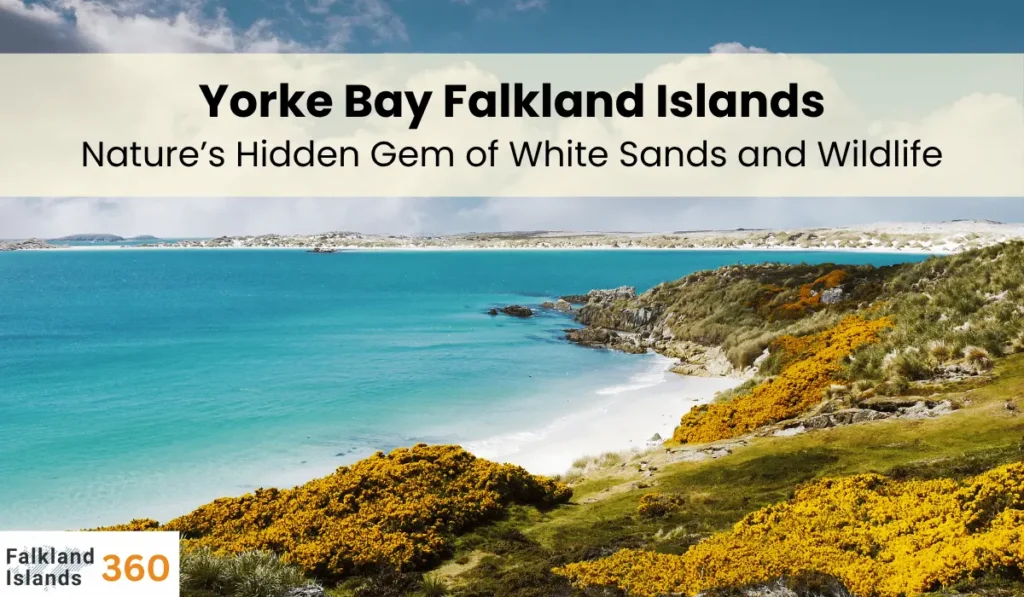Falkland Islands tourism offers an unforgettable journey to a remote, windswept archipelago. This British Overseas Territory lies in the South Atlantic, about 300 miles from Argentina’s coast.
With a tiny population of only around 3,500 people, the islands boast vast unspoiled wilderness and abundant wildlife. In fact, nearly a million penguins call the Falklands home. Visitors enjoy dramatic scenery, from icy mountain peaks to sweeping beaches.
In this guide we cover everything about Falkland Islands tourism: how to get there, what to see, local culture, climate, and practical tips.
How to Get Falkland Islands
Getting to the Falklands is part of the adventure. Most travelers fly to Mount Pleasant Airport (MPN) on East Falkland. There is a weekly civilian flight from Santiago, Chile (LATAM) that stops in Punta Arenas. A monthly flight from Argentina (via Rio Gallegos or Córdoba) also serves the islands. From the UK, the RAF operates two flights per week from Brize Norton, via Ascension Island. All flights arrive at MPN, and a shuttle bus takes you to Stanley, the capital (about a one-hour drive).
Cruise ships are another option for Falkland Islands tourism. Over 40 expedition cruise ships include the Falklands on their itinerary during the austral summer. This is a great way to visit if you’re already cruising Antarctica or South America. Note that independent travelers cannot just show up – you must arrange accommodation and transfers in advance.
Once on the main islands, you can get around by road, sea, or local air. A ferry (MV Concordia) runs between East and West Falkland a few times per week. This scenic 1.5–2 hour ferry trip connects New Haven (East Falkland) and Port Howard (West Falkland). For inter-island travel, the Falklands Government Air Service (FIGAS) operates small planes to dozens of landing strips. There are also guided 4×4 tours for off-road trips to wildlife sites like Volunteer Point.
Stanley Harbour is the main port and hub of the islands.
Top Attractions in falkland Islands
Stanley, the capital and largest town, is the heart of Falkland Islands tourism. Here you’ll find historic sights, museums and shops. The iconic Christ Church Cathedral overlooks the harbor, and the tiny King Edward VII Memorial Clock Tower is a local landmark. The Battle Memorial at Stanley commemorates the 1982 Falklands War. Outside Stanley, top attractions include Gypsy Cove, famous for its beach and free-roaming penguins, and Cape Pembroke Lighthouse with panoramic sea views.
Penguin colonies are among the most popular attractions. Volunteer Point on East Falkland hosts the largest king penguin colony in the Falklands (about 2,000 breeding pairs). Here you can also see Magellanic and gentoo penguins and elephant seals. Sea Lion Island is another must-see for wildlife, with beaches full of elephant seals and sea lions. Birdwatchers will enjoy Carcass Island and Saunders Island, known for thousands of nesting seabirds.
Hiking and nature walks are fantastic. The Falklands feature hundreds of miles of trails through tussac grass and rocky valleys. Notable treks include Mount Usborne (highest peak) and wild Bertha’s Beach, where penguins and shorebirds gather. History buffs can tour old war sites like San Carlos Water and Goose Green, or visit the Museum of the Argentinean Fight for the Malvinas in Stanley. This mix of nature and history makes Falkland travel rich and varied.
Nature & Wildlife in Falkland Islands
King penguins thrive in the Falklands: volunteer guides keep tourists at a distance from the colony.
Wildlife is the star of Falkland Islands tourism. The islands are home to a mind-boggling array of animals: about a million penguins nest here each year. The five species you might see include King, Gentoo, Rockhopper, Magellanic and even a few Macaroni penguins. In fact, rockhopper penguins (320,000 pairs as of 2010) and gentoos (120,000 pairs) form huge colonies on remote islands.
Beyond penguins, the Falklands host large colonies of sea lions and elephant seals. Sea Lion Island has over 2,000 elephant seals during breeding season, and you may spot orcas offshore hunting them. Sea lions laze on the beaches, and even dolphins and whales are common. Birdwatching is world-class: albatross, petrels, cormorants, and migratory birds thrive here (the government even designates key areas as Important Bird Areas). Wildlife tours and boat trips from Stanley often promise close encounters with these creatures.
This rich ecosystem is protected. The Falklands Government and conservation groups work to preserve habitat, and some islands (like Sea Lion Island and New Island) are private nature reserves. Visitors should follow guidelines (stay on paths, keep distance, no feeding) to minimize disturbance. The islands’ wildlife is a major draw for wildlife trips and underpins the local tourism industry.
Local Culture & Cuisine
Falkland culture is a unique blend of British, Channel Island and local traditions. English is the primary language, and many islanders have Scottish or English roots. Stanley feels like a small UK town with pubs, post boxes and sheep farms. You might visit a local pub for live music or try the World Shepherdess competition if your timing is right.
Food in the Falklands emphasizes local produce. Islanders raise sheep and trout. A traditional breakfast can include mutton chops, sausage and bacon. Lunch might be homemade soup with freshly baked bread. For dinner, you can try Falklands lamb (renowned for its flavor), or fresh seafood like sea trout, rock cod (mullet) or toothfish. Be sure to sample the local tea culture: a mid-morning “smoko” break involves tea and homemade cakes, often featuring local berries (teaberry scones or diddle-dee jam).
Stanley has a few restaurants and pubs serving these local dishes. Popular drinks include South American wines and Falkland-brewed beer (try Peat Cutter or Rock Hopper ale). You’ll pay in Falkland pounds (equal to UK sterling) or British pounds. Credit cards work in most places, but carry some cash for rural areas. The friendly islanders are known for hospitality – a farm-stay host might welcome you with a home-cooked meal.
Climate & Best Time to Visit Falkland Islands
The Falkland Islands have a cool maritime climate. Summers (December–March) are chilly but pleasant, with long daylight hours. Average highs are around 14–15°C (mid-50s°F) and lows around 5–6°C. Winters are cold and windy (June–August) with averages near 2°C. It rarely snows heavily, though strong winds make it feel cold. Rain is possible year-round, with about 570 mm annual precipitation.
Weather can change fast. Even in summer carry layers, a waterproof jacket, and sturdy boots. The best time for Falkland Islands tourism is the southern hemisphere summer (November–March). Wildlife (penguins breeding, flowers blooming) and travel conditions are optimal then. June–September sees fewer visitors and less wildlife activity, but if you go in winter you might enjoy empty landscapes and special birdwatching. Check forecasts before tours, as tours and flights often hinge on favorable weather.
Tips to Travel Falkland Islands
- Safety: The Falklands are very safe. Petty crime is rare. Be aware of old minefields on the uninhabited moorlands (they are fenced off). Locals say helping travellers is part of the culture. Travel insurance is strongly advised (and entry requires proof of insurance).
- Entry: No tourist visa is needed for stays up to 4 months. Passport must be valid for your stay. You may need to show return tickets and hotel booking. A departure tax (a few Falkland pounds) is paid in cash at Mount Pleasant Airport.
- Money: The Falkland pound (FKP) is used; it equals UK sterling. Pounds and some foreign currency are accepted, but cash is handy in case (credit cards are widely accepted in Stanley). There’s one bank and ATM in Stanley, so bring extra cash if leaving the city.
- Transport: Renting a 4×4 car is popular (roads outside Stanley are mostly gravel). Drive slowly on dirt tracks. Guided tours and taxis are available. Use FIGAS air taxis for remote trips, and book in advance.
- Health: Healthcare is good in Stanley (a small hospital), but remote travel means you should have travel insurance that covers emergency evacuation. No vaccinations are required, but check travel clinic advice. Tap water is drinkable.
- Connectivity: Internet and phone service exist but can be slow. Wi-Fi is in most hotels and restaurants in Stanley. Enjoy the digital detox in the wild areas.
- Fun Facts: The Falklands have over 7 million sheep – far more than people! The islands use daylight saving time in summer. Local sports include soccer and rugby. English sheepdog trials and Falklands Day celebrations (August 14) are local events. The islands are sometimes called “The Penguins’ Country” because penguins outnumber humans.
Conclusion
Falkland Islands tourism offers a rare blend of adventure, wildlife and history. Travelers to the Falklands can expect rough-hewn beauty, friendly locals, and memories of wildlife encounters. Whether hiking windswept hills, watching squawking penguins or sampling home-style mutton pies, visitors find that the remote Falklands leave a big impression. Careful planning (flights, accommodation, insurance) ensures a smooth trip. In every season the islands deliver unique charms, so pack warmly, respect the environment, and prepare for an amazing journey to one of the safest, most wildlife-rich destinations on Earth.
Frequently Asked Questions
Do I need a visa to visit the Falkland Islands?
No visa is required for tourist stays (up to 1 month on arrival, extendable). Most nationalities can stay up to 4 months without a visa. Always carry your passport valid for your stay.
What is the best way to get to the Falklands?
Fly via Santiago (LATAM flight) or London (RAF flights from Brize Norton). Many cruises also include the Falklands. Once there, domestic flights (FIGAS), ferries and 4×4 tours connect the islands.
When is the best time for Falkland Islands tourism?
Summer (November–March) is ideal: milder weather and active wildlife (breeding penguins, puffins). Winters are cold, windy and quiet. Check tours availability as summer is peak season.
What wildlife can I see on the Falklands?
An incredible range: about 1 million penguins (king, gentoo, rockhopper, Magellanic, macaroni), seals (sea lions, elephant seals), albatross, and sea birds. Whale and dolphin sightings are common from boats.
Is Falkland Islands tourism safe?
Yes. The Falklands are considered one of the safest destinations in the world. Crime is very low. Natural hazards (like old landmines in fenced areas) exist, but if you follow local advice, the trip is safe and well worth it.
What is the climate like in the Falklands?
The climate is cool and oceanic. Temperatures range from about −5°C in winter to 14–15°C in summer. It’s often windy and weather can change quickly. Bring warm waterproof clothing year-round.
What currency is used in the Falklands?
The Falkland Islands Pound (FKP) is used, equal in value to British pounds. UK sterling is also accepted. Credit cards work in Stanley, but bring cash for remote areas and ferry fees.




